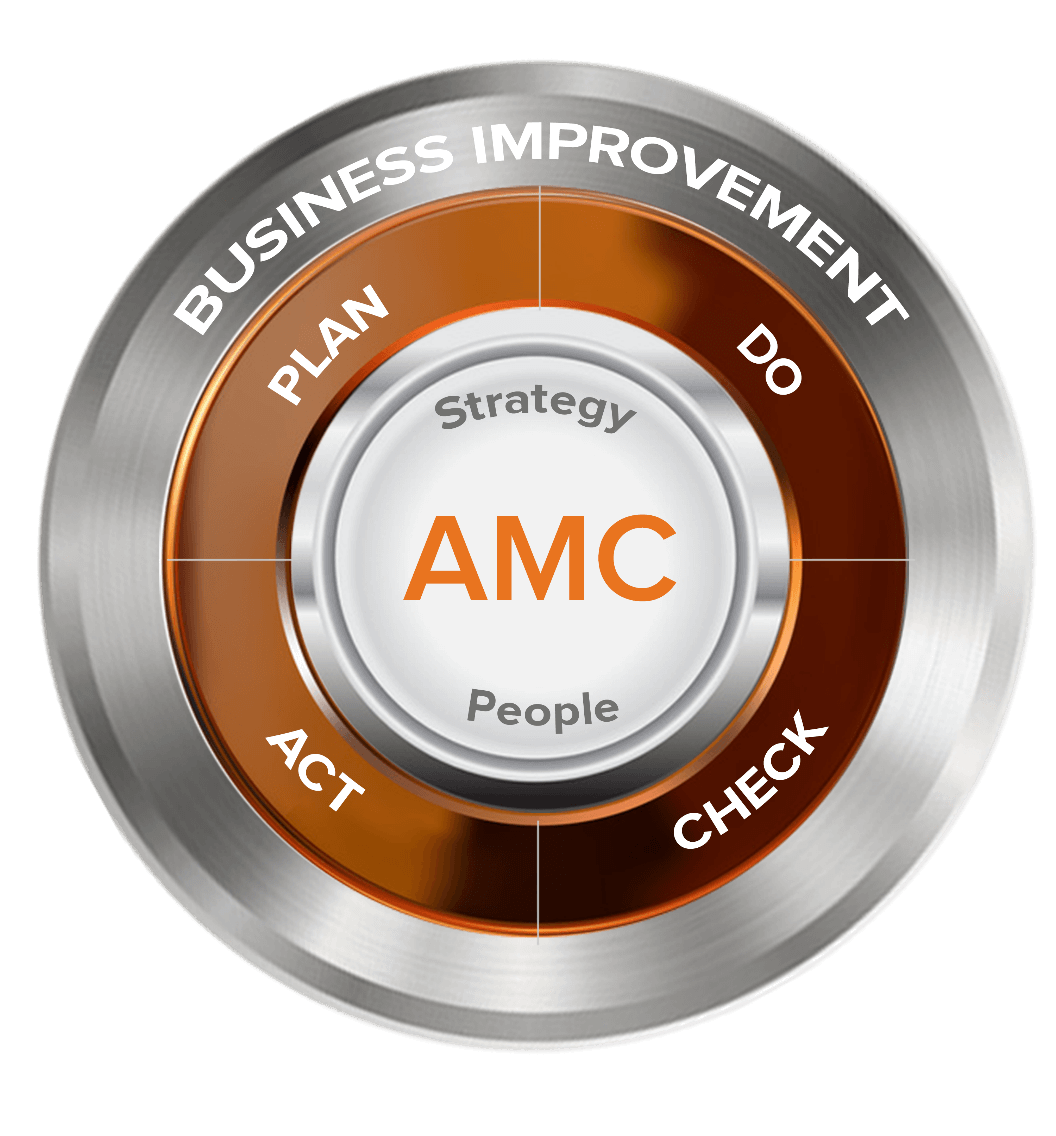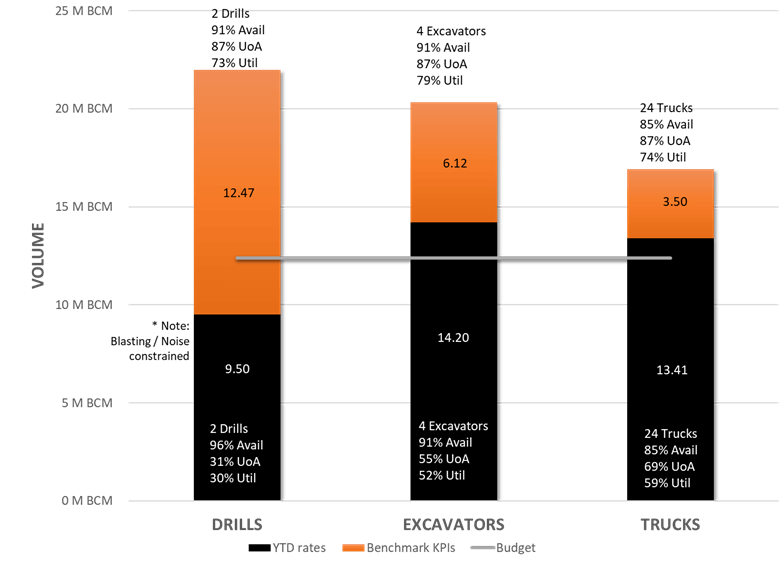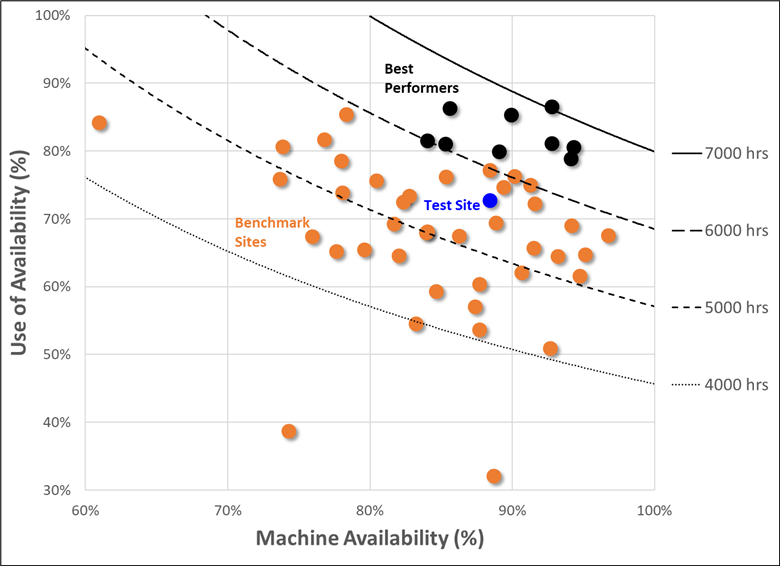Mine Production Management and Improvement by numbers
Mining companies now have the opportunity to gather vast amounts of operational data, but productivity improvements will only be seen if the data is managed and acted upon correctly
Technology has transformed mines. It is said that 90 per cent of all data in use today was generated in the past two years. Some mines now have the ability to collect real-time data, operate remotely and receive information to make timely decisions; others generate and collect all the data at their disposal and have to do the best they can with what they have. One thing is certain: the increasing use of technology has resulted in an immense amount of data being recorded every month, every day, every second. Technology allows us to continuously measure things at an ever-increasing level of accuracy, but if the data doesn’t guide discussions that lead to productivity improvements, then gathering the data often becomes a wasted effort.
Data mining
The main objective of data collection is to enable decision making, hence the saying: ‘if you can measure it you can manage it.’ Quite often though, decision makers do not have enough time to monitor primary KPIs and focus on trends, deviations and exceptions. Benefits are lost if the data is not managed, cleaned and viewed by the decision maker in a timely manner. Therefore, we often tend to accept everything we see as true and acceptable or defer necessary decision making.
Is this where ‘analysis paralysis’ sets in? Or is inaction a result of unstructured, unformatted data?
Good data management and effective use of data are vital to realizing value from technology, gaining a deep understanding and achieving actionable insight. Knowing what metrics to observe and having access to industry benchmarks can drive improvement and maintain focus. For the best results, improvement needs to be focused on the high-impact areas.
Conventional mining today has become increasingly expensive, as miners reach deeper into the earth to find profitable orebodies, and work further and further away from infrastructure. Every day, more and more data is generated in an effort to better understand the complexities of mining and counter the effect of escalating cost by working smarter and more productively. To interpret trends and relations from these datasets, more detailed data mining and analytics (and time) is required. However, improvement without data is impossible.
The value of monitoring production data is usually well understood. Significant investment is often made into fleet management systems (FMS) and integrated production reporting software, because this contributes toward better data collection and measurement. However, to realize the value potential of these systems takes ongoing analytical effort, feeding into a comprehensive and sustained improvement program focusing on improving productivity. To truly achieve performance breakthroughs, the process demands digital innovation, including software to indicate optimized asset utilization potential, devices to remotely monitor and control activities, and robotics for the automation of repetitive tasks. Actionable insights from analytics help mine production managers make decisions when controlling and improving their operations. Good processes in data management and using the data effectively are vital to realizing value from technology.
Like many in the mining industry, AMC follows the Deming cycle (also known as the plan, do, check, act or PDCA cycle) to guide business improvement (BI). This consists of the following steps:
- Plan – define the problem to be addressed, collect relevant data, and ascertain the problem’s root cause
- Do – develop and implement a solution; decide upon a measurement to gauge its effectiveness
- Check – confirm the results through before-and-after data comparison
- Act – document the results, inform others about process changes and make recommendations for the problem to be addressed in the next PDCA cycle.
Define the problem
Responsible leaders within an organization are faced with many situations where they have to make decisions on a daily basis that could have a significant impact on the business. These decisions may seem trivial at the time, but could mean being the same or better than the peer group. They could add up to be either an average or a superior year’s performance. These questions could be (for example) ‘how much material on top of the bench is acceptable for a good road surface without affecting re-drill?’ or ‘how much hangtime is an acceptable practice for a loader?’
These decisions become more and more complex with increased financial and environmental pressure on mining organizations and a more results-oriented mining industry.
This is where throwaway phrases are so common, eg ‘the standard you walk past is the standard you set.’ Without due consideration to the ‘standard’, a site may continue to operate for years without comparing their practices with peer groups and therefore miss the opportunity to be more productive and more profitable.
The BI starting point is to define the problem and opportunity.
Data management
Many mine sites these days use complex FMS that provide a dispatch and control process for mining equipment and capture production and equipment performance data. The data collected is used in algorithms within the FMS to determine the most productive routes for haul trucks. There are also many mines that use manual prescribed list of duty (PLOD) cards to collect data, which are then entered into production databases or spreadsheets. Most mines use some form of Management Operating System (MOS) or a commercial reporting system (like Trimble’s MMRS system) to collate the FMS or PLOD data with other site data.
In order to achieve a good understanding of a mine’s productivity and efficiencies, a robust validation process is required to ensure data integrity is maintained, and reports provide an accurate interpretation of the data and representation of what actually occurred in the operation.
From AMC’s involvement with mining sites it is clear that there are some common challenges and improvement issues:
- collection – standard data definitions are not applied, or the FMS is not set up adequately causing incorrect referencing, or the time usage model is not correctly applied
- validation – production data is not checked, validated, and corrected
- store – data storage does not provide for efficient data mining
- analytics – insufficient analysis to determine priority improvement areas or potential for improvement and bottom-line impacts
- interpret – at-risk production targets and actions to be taken are not identified
- insufficiently focused improvement programs.
Data management is critical as it impacts directly on functionality, accuracy and representativity of the data.
Improvement potential
What to focus on? Where to start? What tools are available to help with making the most intelligent decision? Bottleneck analysis and cost driver tree analysis are useful visual tools that provide insight into current capability, forecast, and the gap between current operations and forecast. Quite often, improvement initiatives are executed without knowing the impact on the bottom line. Bottleneck analysis provides a high-level, quick assessment of which value chain component is the bottleneck and the reason for it, ie equipment utilization or performance. In the example given in Figure 1, it is clear that drilling is currently underperforming. Although it has ample capability, hauling is the secondary bottleneck. Drilling use of available time is well below industry standard. Cost saving potential seems to exist in the excavator fleet and may involve equipment rationalization, targeted maintenance, or location restriction.
Individual operations can be ranked according to their productivity performance. When combining these individual performances and plotting the spread, it is easy to observe which are the best or worst performers. Through a thorough analysis of benchmark data, measuring the improvement potential in productivity from the middle of the spread to the 75th percentile for the whole group, it is estimated that for the average mine in the industry, 30 per cent productivity improvement is possible in drilling operations and 20 per cent productivity improvement in loading and hauling operations.
Actionable insight
Data equals understanding. In the words of Carly Fiorina, former executive, President, and Chair of Hewlett-Packard, ‘The goal is to turn data into information, and information into insight.’
It is well known that on the journey towards technological maturity, not all sites have the same departure point, capability or even aspiration to change. There is, however, one certainty and that is that each site has some improvement potential. To best quantify improvement potential, it is worth observing what other mines are doing (benchmark), or asking what the equipment design potential or best sustainable potential are. The difference between best and current performance provides an estimate of the potential improvement to the performance level. Benchmarking data sets like AMC’s – which contain measures and KPIs from more than 150 underground and open pit mines – provide an invaluable guide to performance capability for the industry.
On mine sites, business improvement teams often take ownership of the improvement opportunities and, with benchmarking data in hand, set out to close the gap, cross-comparing progress on a frequent basis. These teams are often challenged with situations where adequate data is available and multiple solutions are possible, but prioritized solutions are lacking.
Haul truck utilization and productivity are common priority improvement areas. Improvement initiatives in this area focus on maximizing operating time, reducing cycle times and increasing payload. Effective improvement initiatives are listed in the following section.
Possible operating time improvement initiatives include:
- automation – increase in availability and operational time
- hot seat shift change staggered shifts and meal break optimization
- use of relief operators during meal breaks
- attendance – reduced head count on site can cause additional standby time
- visual display boards – allows operators to know targets and when to escalate delays.
Possible cycle time improvement initiatives include:
- priority rules replacing stop signs for traffic management.
- pit design, dump design and scheduling – mine planning to minimize haul distances, provide effective. loader access, and dual ramp access to provide alternative haul routes.
- global positioning systems (GPS) on trucks and dispatch triggers on hang and queue delays to keep trucks moving and minimize non-productive delay time.
- lighter trays – faster travel speeds and lower fuel consumption.
- truck type alignment – a mix of truck types can cause haul road interference, slowing the fleet according to the slowest truck on the haul route.
- in-pit crush and convey – reduce sectors of slow uphill haulage where permanent ramps exist.
- trolley assisted haulage – faster uphill travel.
- road conditions, particularly ramp grade consistency.
- blast optimization to increase dig rate – fragmentation and fewer secondary blasts.
- refuelling optimization.
Possible payload improvement initiatives include:
- utilization of weightometers to monitor and manage payloads, both in trucks and loading equipment.
- reduce underloading and excessive time getting it correct
- operator skill.
AMC has seen evidence of sites without automation achieving above 7000 operating hours (Figure 3).
Value realization
Modern technology has provided operations with ample data that can be used to effectively improve productivity and reduce costs. Unless the data systems are robust, data validated and the value proposition clearly defined, productivity and cost improvement becomes an elusive task. Using appropriate analytical tools and validated benchmarking data, mine operations are discovering the ability to focus on improvement opportunities, prioritize their effort and realize results. Even mines that operate less sophisticated systems can benefit from a systematic and analytical approach.
Benchmarking analysis highlights there are significant gains to be made across most operations by increasing haulage operational time, optimizing cycle time and payload if they are measured and observed in the correct way.
Subscribe for the latest news & events
Contact Details
Useful Links
News & Insights





